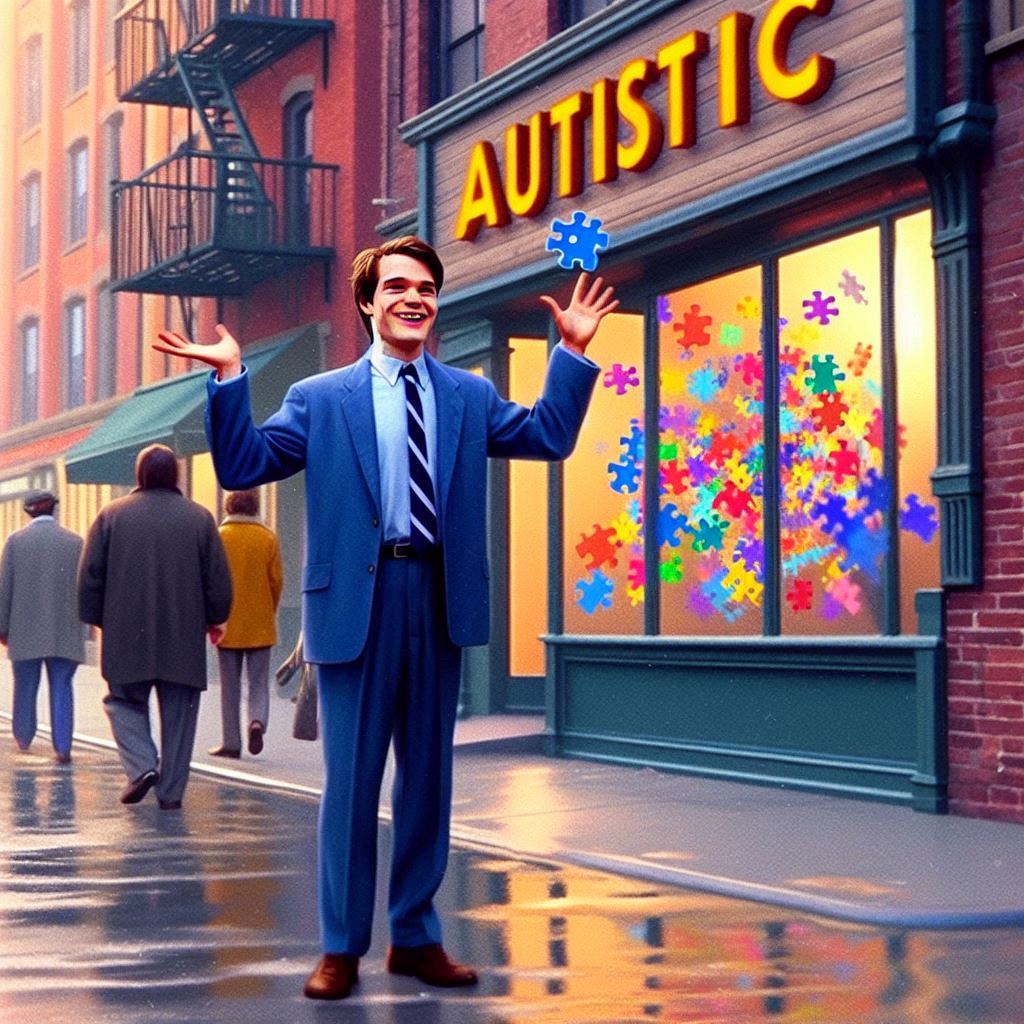
Before I was officially diagnosed, my brain always felt like a puzzle I couldn’t solve. Getting re-diagnosed with ADHD at 31 helped clarify some things — impulsivity, forgetfulness, hyperfocus — but there were still pieces missing.
Why did I also crave rigid structure? Why did loud noises send me into a spiral? Why did minor changes to my schedule feel like full-blown chaos?
That’s when I stumbled across the term AuDHD — the co-occurrence of ADHD and autism. Suddenly, everything started to make sense.
How I Discovered AuDHD
Ironically, my journey to uncovering AuDHD began with writing about ADHD. Readers would often comment, “This sounds more like autism,” and suggested I explore the overlap.
At first, I was skeptical — like many people, I had a narrow view of what autism looked like. But my curiosity took over, and the more I read, the more I saw my own experiences reflected back at me.
The Numbers Don’t Lie
- The CDC reports that 28–44% of autistic people also have ADHD.
- Other studies say it’s even higher — between 50–70%.
- Before 2013, clinicians weren’t even allowed to diagnose ADHD and autism together. That means many people like me were left undiagnosed or misunderstood for years.
Eventually, I took the RAADS-R screener, designed for adults who might fly under the radar in traditional autism assessments. I scored 158 — “strong evidence of autism.”
It was the missing piece I didn’t even know I was looking for.
6 Signs I Missed That Pointed to AuDHD
1. Sensory Sensitivities (and Seeking)
Certain sounds, fabrics, and lights made me irrationally anxious. I couldn’t wear scratchy clothes, and loud environments drained me in minutes. But I also sought sensory input — like wrapping myself in heavy blankets or obsessively rubbing soft fabrics. That push-pull? Classic autism.
2. Craving Routine — Then Getting Bored
I’d build perfect routines, thrive in them for a week… and then abandon them out of boredom. My ADHD brain hates monotony, while my autistic brain craves predictability. Living between the two felt like a tug-of-war.
3. Hyperfixations vs. Special Interests
Sure, I had ADHD-style hyperfixations — but some interests, like psychology and musicals, have stuck around for decades. These were more than passing fascinations — they were grounding, lifelong passions. Special interests, not just hyperfixations.
4. Struggles with Transitions
Even shifting from one enjoyable task to another felt jarring. My body resisted the change. ADHD made starting hard, but this deep discomfort with transitions pointed to autism.
5. Masking and People-Pleasing
I learned early on how to “act normal.” I copied others’ behaviors, scripted conversations in my head, and always tried to say the “right” thing. I exhausted myself trying to fit in — and didn’t even realize I was doing it. Masking is especially common in autistic women and AFAB folks.
6. Resistance to Change
If plans changed last-minute, I didn’t just feel annoyed — I felt completely off-balance. ADHD might not love surprises, but this was something deeper: a full-body stress response to unpredictability.
How Realizing I’m Autistic Changed Everything
Getting an AuDHD diagnosis didn’t transform me — but it gave me permission to understand myself with more kindness and clarity.
✨ I stopped fighting my need for structure.
✨ I stopped blaming myself for getting overwhelmed in chaotic environments.
✨ I stopped trying to “fix” myself and started building systems that actually support my brain.
Instead of feeling like I’m constantly at war with myself — chaos vs. order, stimulation vs. stillness — I’m learning to live in harmony with both my ADHD and autistic traits.
Final Thoughts
For so long, I felt like I wasn’t “enough” of anything — not focused enough, not flexible enough, not calm enough. But now I know: I was never broken. I was just neurodivergent and undiagnosed.
Understanding I’m AuDHD didn’t just change how I live — it changed how I treat myself. And that’s everything.


